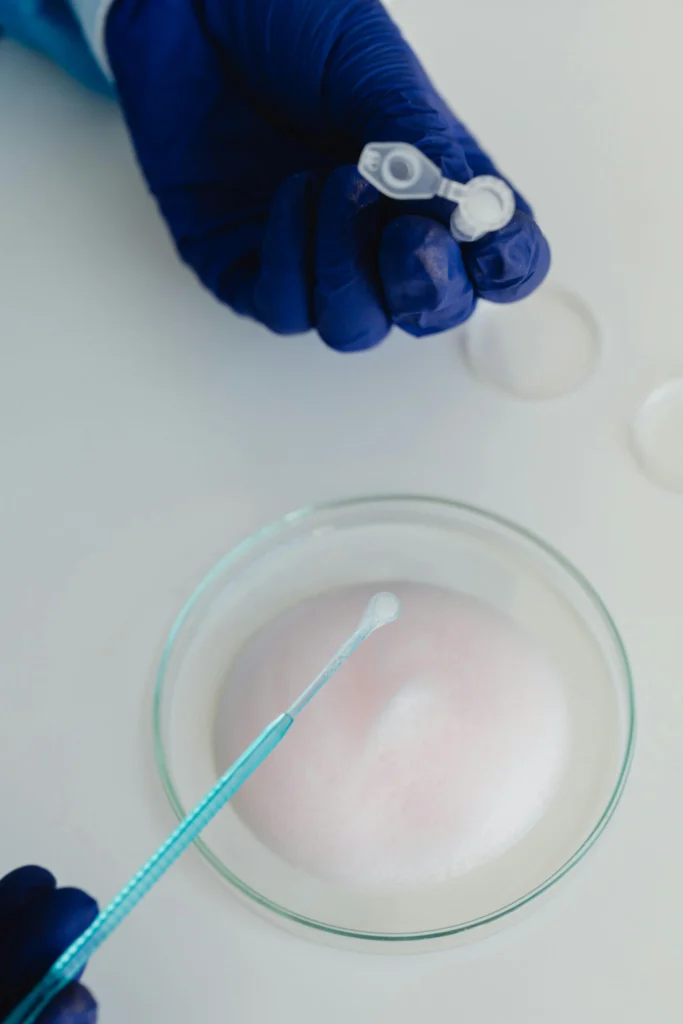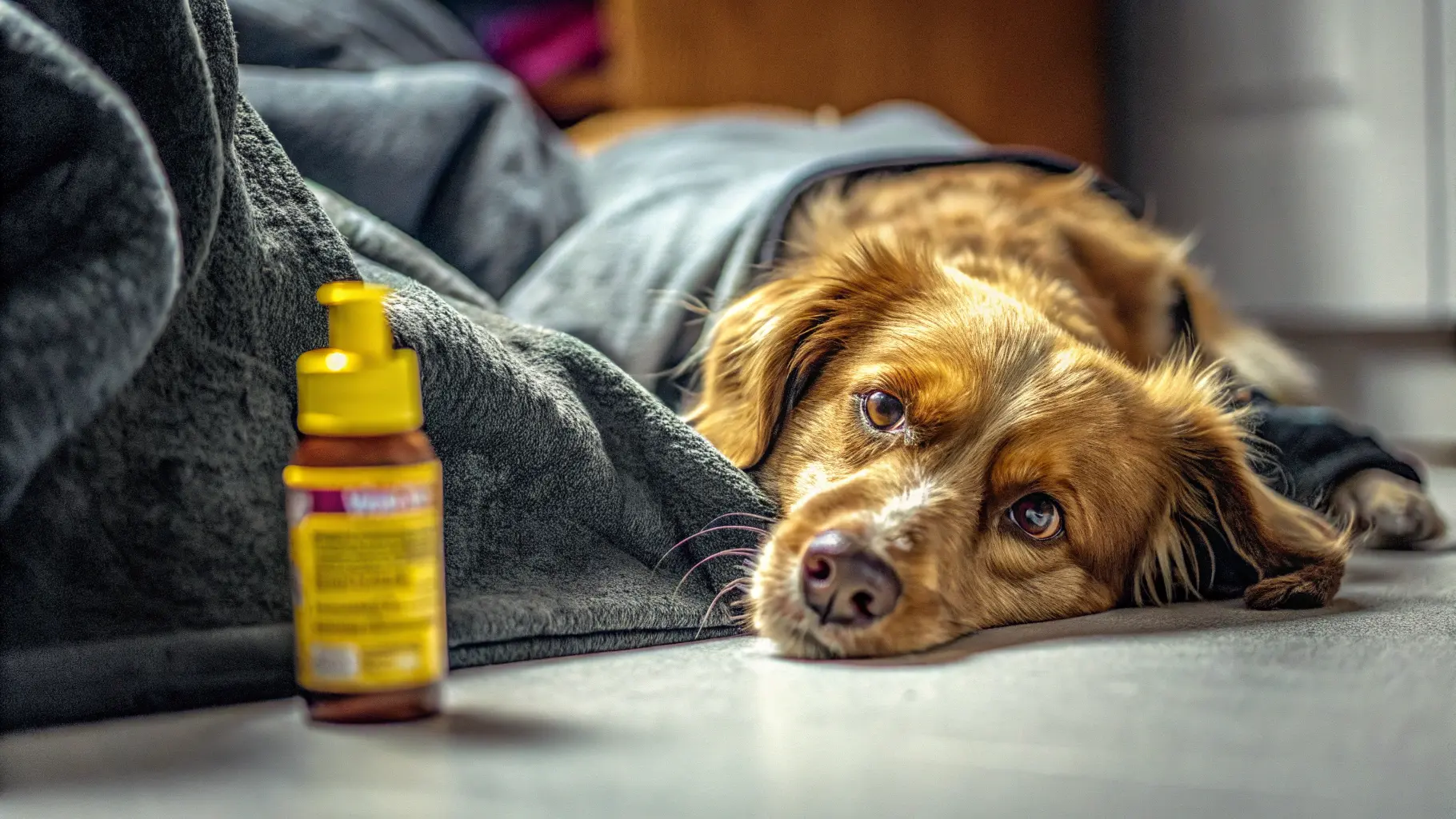Can you use human Neosporin on dogs?
Pet owners often find themselves in a quandary when their furry companions sustain minor injuries. The question arises: Can you use human Neosporin on dogs? While this popular over-the-counter ointment is a go-to solution for human skin abrasions, its application on canines requires careful consideration. Delving into the complexities of this topic reveals not only the potential benefits but also the risks associated with using human antibiotic ointment for dogs.
The debate surrounding the safety of Neosporin for dogs is multifaceted. On one hand, the active ingredients in Neosporin are designed to combat bacterial infections effectively. On the other hand, the physiological differences between humans and dogs necessitate a cautious approach. Before reaching for that familiar tube, it’s imperative to understand both the science behind the product and the unique needs of your canine companion.
Table of Contents
Table of Contents
Understanding Neosporin: What’s Inside That Tube?
To comprehend whether is Neosporin safe for dogs, one must first examine its composition. This triple-antibiotic ointment contains three primary active ingredients: neomycin, polymyxin B, and bacitracin. Each of these components plays a distinct role in targeting various types of bacteria commonly responsible for skin infections.
The Triple Antibiotic Powerhouse: A Look at the Active Ingredients
Key Facts About Neosporin Use in Dogs
Neomycin sulfate, a broad-spectrum antibiotic, works by inhibiting protein synthesis in susceptible bacteria. Polymyxin B exerts its bactericidal effects by disrupting the bacterial cell membrane, while bacitracin interferes with cell wall formation. Together, these ingredients create a formidable barrier against infection, making Neosporin an effective treatment for minor cuts and scrapes in humans.

Why These Ingredients Work: Targeting Bacteria
The synergistic action of these antibiotics ensures comprehensive coverage against gram-positive and gram-negative bacteria. By attacking multiple bacterial processes simultaneously, Neosporin minimizes the likelihood of resistance development. However, while this mechanism proves highly efficacious in human applications, its translation to veterinary use presents certain challenges.
Considering Your Canine Companion: Dog Skin vs. Human Skin
Dogs possess a markedly different dermal composition compared to humans, which significantly impacts how topical treatments interact with their skin. Understanding these variances is crucial when considering the use of human Neosporin on dogs paws or other body parts.
The pH Factor: A Key Difference to Understand
Human skin maintains a slightly acidic pH range of 4.5 to 5.5, creating an environment conducive to the effectiveness of Neosporin’s active ingredients. In contrast, canine skin typically exhibits a neutral to slightly alkaline pH ranging from 6.2 to 7.5. This fundamental difference can alter the absorption and efficacy of the ointment, potentially diminishing its therapeutic value or increasing the risk of adverse reactions.
Sensitivity Sensitivities: Why Dogs Can React Differently
Dogs’ heightened sensitivity to certain compounds stems from their unique physiology and behavior patterns. Their tendency to lick treated areas introduces additional variables, as ingestion can lead to gastrointestinal upset or more severe systemic effects. Moreover, some dogs may exhibit hypersensitivity reactions to specific components within Neosporin, manifesting as localized irritation or more widespread allergic responses.
Revisiting the Central Question: Is Human Neosporin Really Safe for Dogs?
Veterinary professionals generally advise against routine use of human Neosporin on dogs, particularly without prior consultation. While occasional application might not pose immediate harm, several factors warrant careful deliberation before proceeding with this treatment option.
The Short Answer: Proceed with Caution, But Why?
The cautious stance taken by veterinarians stems from the potential complications associated with using human antibiotic ointment for dogs. Even though Neosporin’s active ingredients demonstrate antibacterial properties, their formulation isn’t specifically tailored to address canine-specific pathogens or accommodate the physiological nuances of dog skin.
When It Might Be Tempting: Minor Scrapes and Cuts
Pet owners naturally seek quick solutions for their dogs’ minor injuries, making products like Neosporin appealing options. Superficial abrasions, small cuts, or mild irritations might seem like appropriate scenarios for applying the ointment. However, even in these seemingly innocuous cases, alternative treatments specifically designed for veterinary use often prove safer and more effective.
Potential Pitfalls: Risks of Using Human Neosporin on Dogs
While the intent behind using Neosporin is typically well-meaning, several significant risks accompany its application on canine patients. Recognizing these hazards enables pet owners to make informed decisions regarding their dogs’ healthcare.
Allergic Reactions: What to Watch Out For
Adverse reactions to Neosporin can manifest in various forms, ranging from mild irritation to severe dermatitis. Symptoms such as redness, swelling, itching, or hives indicate an allergic response that requires immediate attention. Some dogs may develop contact sensitization, where repeated exposure increases the likelihood and severity of future reactions.

Ingestion Issues: A Licking Hazard
One of the most pressing concerns regarding Neosporin for dogs revolves around their natural inclination to lick treated areas. This behavior poses a dual threat: first, by removing the medication before it can take effect; second, by introducing potentially harmful substances into their digestive system. The question of whether is Neosporin safe for dogs to lick becomes paramount, as ingesting even small amounts can lead to vomiting, diarrhea, or more serious complications.
The Risk of Misdiagnosis: When It’s More Than a Scratch
Is Neosporin safe for dogs
Relying on over-the-counter treatments like Neosporin might inadvertently mask underlying issues requiring professional intervention. Conditions such as abscesses, fungal infections, or autoimmune disorders could present symptoms similar to those treatable by topical antibiotics, leading to delayed proper diagnosis and treatment.
When to Absolutely Avoid Human Neosporin on Your Dog
Certain situations demand absolute avoidance of human Neosporin on dogs, regardless of the injury’s apparent severity. Recognizing these scenarios helps prevent complications that could jeopardize your pet’s health.
Deep or Puncture Wounds: A Serious Red Flag
Penetrating injuries, including bites or puncture wounds, necessitate immediate veterinary evaluation rather than home treatment with Neosporin. These types of wounds carry a high risk of deep-seated infection or foreign body retention, requiring thorough cleaning, possible surgical intervention, and appropriate antibiotic therapy prescribed by a professional.
Signs of Infection: Pus, Swelling, and Pain
When existing wounds exhibit signs of infection—such as increased redness, warmth, pus discharge, or noticeable discomfort—it’s crucial to seek veterinary care promptly. Applying Neosporin to already infected tissue may exacerbate the situation, especially if the causative organism demonstrates resistance to the ointment’s active ingredients.
Wounds Near Sensitive Areas: Eyes, Mouth, and Genitals
Treatments applied near mucous membranes or sensitive regions require specialized formulations designed to minimize irritation and ensure safety. Using human Neosporin on dogs paws might be less concerning than applying it around delicate areas where unintended absorption or interaction could occur.
Using Neosporin on a Dog’s Paws: Is It Safe?
Using can you use human Neosporin on dogs paws as a remedy may soothe minor abrasions, but caution is crucial. While it offers antibacterial protection, dogs often lick their paws, risking ingestion. Consult a veterinarian before applying any human-grade ointment to canine skin.
Safe Alternatives: What to Use Instead of Human Neosporin
Fortunately, numerous alternatives exist that cater specifically to veterinary needs, offering safer and more suitable options for treating canine wounds.
Veterinary-Specific Triple Antibiotic Ointment
What it is : Antibiotics like bacitracin and neomycin, but made for pets.
Why use it : Safer for dogs, reduces infection risk in minor cuts and scrapes.
How to use : Clean the wound, apply a thin layer, and avoid areas prone to licking.
Silver Sulfadiazine Cream (VetRx)
What it is : Contains silver sulfadiazine, an antimicrobial agent.
Why use it : Effective for burns, surgical wounds, or infected areas.
How to use : Apply only under vet supervision; reapply as directed.
Medical-Grade Honey (e.g., Manuka Honey)
What it is : Natural antibacterial and anti-inflammatory properties.
Why use it : Promotes healing and reduces scarring without chemicals.
How to use : Apply a small amount to cleaned wounds once or twice daily.
Calendula Ointment
What it is : Derived from marigold flowers, with soothing and antimicrobial benefits.
Why use it : Gentle on sensitive skin, reduces redness and swelling.
How to use : Clean the area first; use sparingly and avoid eyes or mucous membranes.
Chlorhexidine Gluconate Gel (2%)
What it is : An antiseptic gel that kills bacteria and prevents infection.
Why use it : Non-stinging, safe for cleaning minor wounds.
How to use : Apply with a cotton swab after cleaning the wound; reapply every 12 hours or as directed.
Veterinary-Approved Topical Treatments: Your Best Bet
Products formulated explicitly for animals incorporate ingredients compatible with their physiology and behavioral tendencies. Brands offering veterinarian-recommended ointments provide peace of mind, knowing they’ve undergone rigorous testing to ensure efficacy and safety across various breeds and conditions.
Natural Remedies: Exploring Safer Options
For those preferring holistic approaches, several natural remedies show promise in promoting wound healing without the risks associated with conventional medications. Honey, known for its antimicrobial properties, serves as an excellent topical agent when sourced appropriately and used under guidance. Similarly, calendula-based preparations offer soothing benefits while supporting the natural healing process.
The Importance of a Vet Visit: When Professional Help is Crucial
While home care plays a vital role in managing minor injuries, recognizing when professional intervention becomes necessary prevents complications and ensures optimal outcomes.
First Aid for Fido: Immediate Steps for Minor Injuries
Initial wound management involves gentle cleaning with saline solution or diluted chlorhexidine to remove debris and reduce bacterial load. Keeping the area dry and protected facilitates faster healing, minimizing the temptation to apply inappropriate treatments like human Neosporin on dogs paws.
Cleaning the Wound: The First Line of Defense
Proper wound hygiene represents the cornerstone of effective first aid. Utilizing appropriate cleansing agents and techniques removes contaminants, reduces infection risk, and prepares the site for subsequent treatment measures.
Preventing Licking: Keeping Paws Away
Addressing the challenge of preventing dogs from licking treated areas proves essential in successful wound management. Elizabethan collars, bitter sprays, or specialized garments help deter this behavior, ensuring medications remain intact and effective.
Knowing When to Seek Professional Advice
Persistent symptoms, worsening conditions, or uncertainty about proper treatment protocols necessitate prompt veterinary consultation. Professionals possess the expertise and resources to diagnose accurately, recommend appropriate therapies, and monitor progress throughout the healing process.

Common Questions Pet Owners Ask
Can I put vaseline on my dog?
Vaseline isn’t harmful but doesn’t aid healing. It’s best used for dry noses or paws, not open wounds. For more details, read our article: “[Can I put vaseline on my dog?]”
Can I Use Neosporin on My Dog?
While Neosporin can be used cautiously on dogs, there are safer alternatives available. For a deeper dive into this topic, check out our article: “[Can I Use Neosporin on My Dog?]”
Is it okay if my dog licked Neosporin?
If your dog licks Neosporin , monitor them for signs of gastrointestinal upset or toxicity. For more guidance, read our article: “[Is it okay if my dog licked Neosporin?]”
FAQs
1. Can you use human Neosporin on dogs?
Yes, can you use human Neosporin on dogs is a common concern. It can be used in very small amounts for minor cuts, but only with veterinary guidance.
2. Is Neosporin safe for dogs?
Is Neosporin safe for dogs depends on the situation. While it’s generally safe for external use, it should not be a long-term or regular treatment without a vet’s advice.
3. Is Neosporin safe for dogs to lick?
Is Neosporin safe for dogs to lick? No, ingestion can lead to gastrointestinal upset or allergic reactions. Use protective measures like bandages or cones to prevent licking.
4. Can you use human Neosporin on dogs paws?

Can you use human Neosporin on dogs’ paws for cracked pads or minor scrapes? It’s possible, but only in small amounts and with supervision to avoid licking or further irritation.
5. What is a safer alternative to human antibiotic ointment for dogs?
Instead of human antibiotic ointment for dogs, consider vet-approved products designed specifically for pets, such as Veterycin or Pet MD topical creams.
6. When should I avoid using Neosporin on my dog?
Avoid using it on deep wounds, punctures, or infected areas. If symptoms worsen or don’t improve in 24–48 hours, seek veterinary care.
7. Can human Neosporin cause allergic reactions in dogs?
Yes, some dogs may be sensitive to ingredients in human Neosporin, leading to redness, swelling, or itching. Discontinue use immediately if you observe these symptoms.
Conclusion: Choosing Wisely for the Health of Your Dog
Navigating the complexities surrounding the use of human Neosporin on dogs demands a balanced understanding of both its potential benefits and inherent risks. While occasional application might not result in immediate harm, prioritizing veterinary-approved alternatives ensures safer and more effective treatment outcomes. By staying informed about proper wound care practices, recognizing warning signs, and seeking professional guidance when needed, pet owners can safeguard their beloved companions’ health and happiness.
Join us on social media and become part of the dog loving family.

